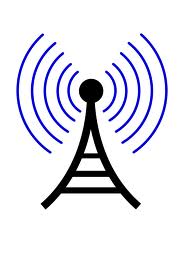NAB and wireless carriers join for “band plan” to reorganize broadcast spectrum after auction
The NAB and key wireless carriers — including AT&T, Verizon Wireless, T-Mobile, Intel and Qualcomm — have reached an agreement on several core principles for reorganizing TV and wireless operations in the 600MHz band after the spectrum auctions.
“While analysis of the band plan and its operational characteristics is ongoing, the parties to this letter have been working together to build consensus where it can be achieved,” the participants told the FCC. “The product of our deliberations to date is a core set of band plan principles that we recommend the Commission follow in developing the 600MHz Band Plan.”

Generally, the group said, the band plan should strive to achieve to maximize the amount of auctioned spectrum (with a preference for paired) made available through the clearing process; to avoid interference to and from licensed wireless and broadcasting services; and to enable device performance and size consistent with existing smart phones and tablets.
More specifically, the analysis to date suggests the band plan support the following principles:
• Adopt a contiguous “down from TV 51” approach with uplink at the top;
• Maximize the amount of paired spectrum above TV 37 (rely on supplemental downlink configurations where spectrum is cleared but pairing options are not viable);
• Rely upon 5MHz spectrum blocks as building blocks for the band plan;
The professional video industry's #1 source for news, trends and product and tech information. Sign up below.
• Incorporate a “duplex gap” or spacing between uplink (mobile transmit) and downlink (base transmit) of a minimum of 10MHz, but no larger than technically necessary;
• Avoid broadcast television stations in the duplex gap;
• Preclude any operations in the duplex gap or guard bands that would result in harmful interference to adjacent licensed services;
• Provide guard bands that are consistent with the statute “no larger than is technically reasonable” to guard against harmful interference between adjacent operations;
• Provide a guard band between a high power broadcaster and mobile downlink that is sufficient to protect the wireless service from interference, which will likely be larger than the 6MHz proposed by the FCC;
• Permit existing operations in TV 37 to remain;
• Facilitate international harmonization; prioritizing harmonization across North America and move forward expeditiously to coordinate with Canada and Mexico for new broadcast assignments.
